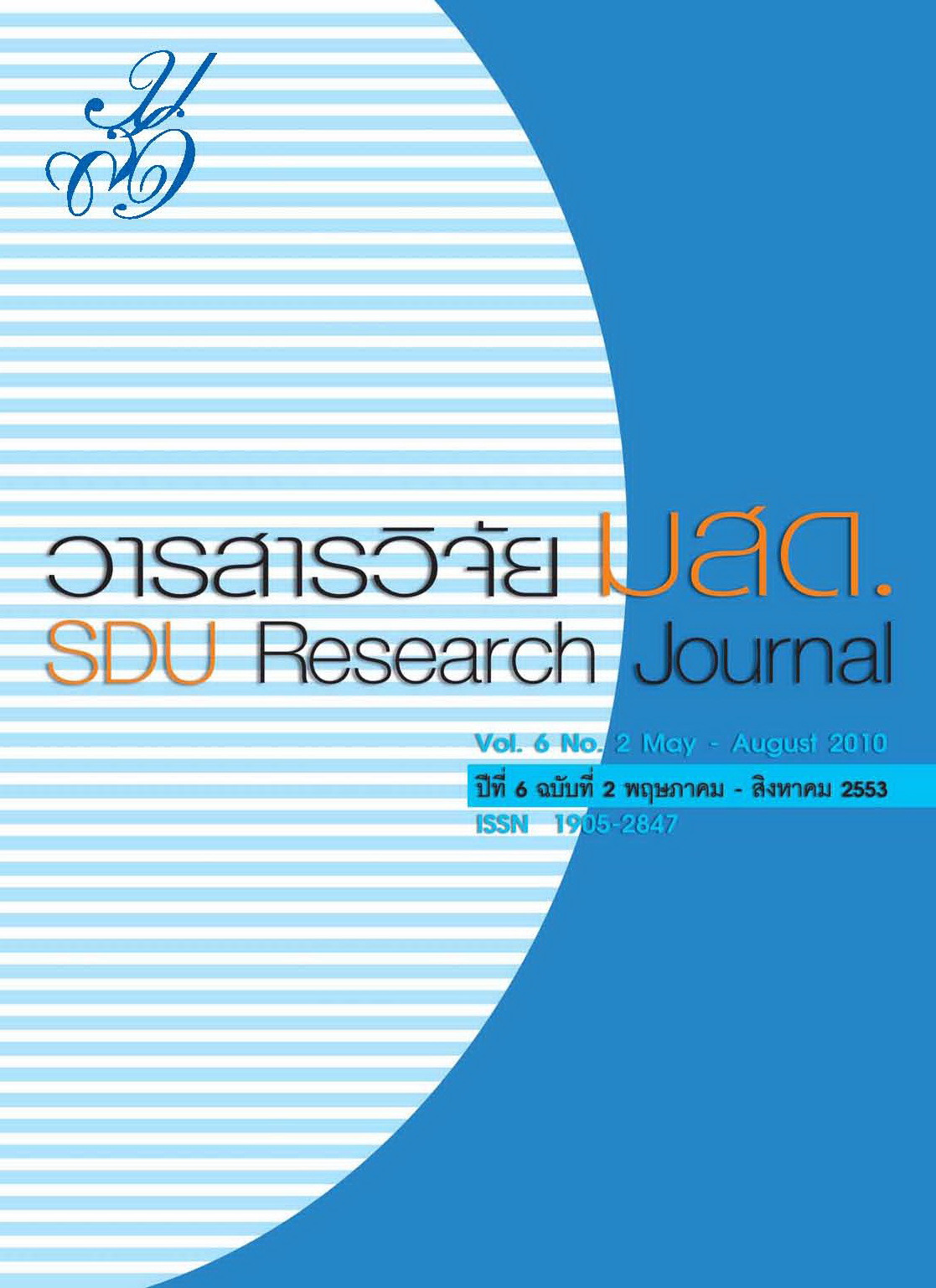รูปแบบการส่งเสริมการอ่านของเด็กปฐมวัยในทรรศนะของครูและผู้ปกครอง
Abstract
Abstract
The purposes of this research were to study knowledge, attitudes, and expectations of teachers and parents towards the reading encouragement for preschool children, to identify reading encouragement factors forpreschool children, to examine the relationship between knowledge, attitudes, expectations and readingencouragement factors for preschool children, and to develop a reading encouragement model for preschoolchildren. The research methodology was a mixture of a qualitative and a quantitative approach. Researchinstruments used were semi-structured questions for the in-depth interview and the focus group and rating-scalequestionnaires with reliability coefficients of 0.8229 - 0.9295. Statistics employed in data analysis were thepercentage (%), mean (~), standard deviation (S.D.), t-test, and Pearsonûs correlation coefficient. The researchresults are presented as follows: The reading encouragement model for preschool children needed clear andspecific policies from involving ministries and related organizations identifying çhowé to promote and supportthe reading for preschool children. The model should initiate educational campaign for parents so as to assistthem to understand the right process of reading development for preschool children, encourage parents to takepart in the reading preparation of preschool children, promote research on books that would be useful for thepreschool children at the ages of 6 months, 1 year, 2 years, and 3 years, provide daily activities relating toreading development for preschool children on a continuous basis, and put library in their classrooms, etc. Theresearch findings can be synthesized as the çUPAé, the triangular model of reading encouragement forpreschool children. All three components of reading encouragement include çUnderstandingé, çPoliciesé, andçActivitiesé. They are all correlated and should be run (or driven) SMART in SEQUENCE with PublicConsciousness and/or Public Mind.








